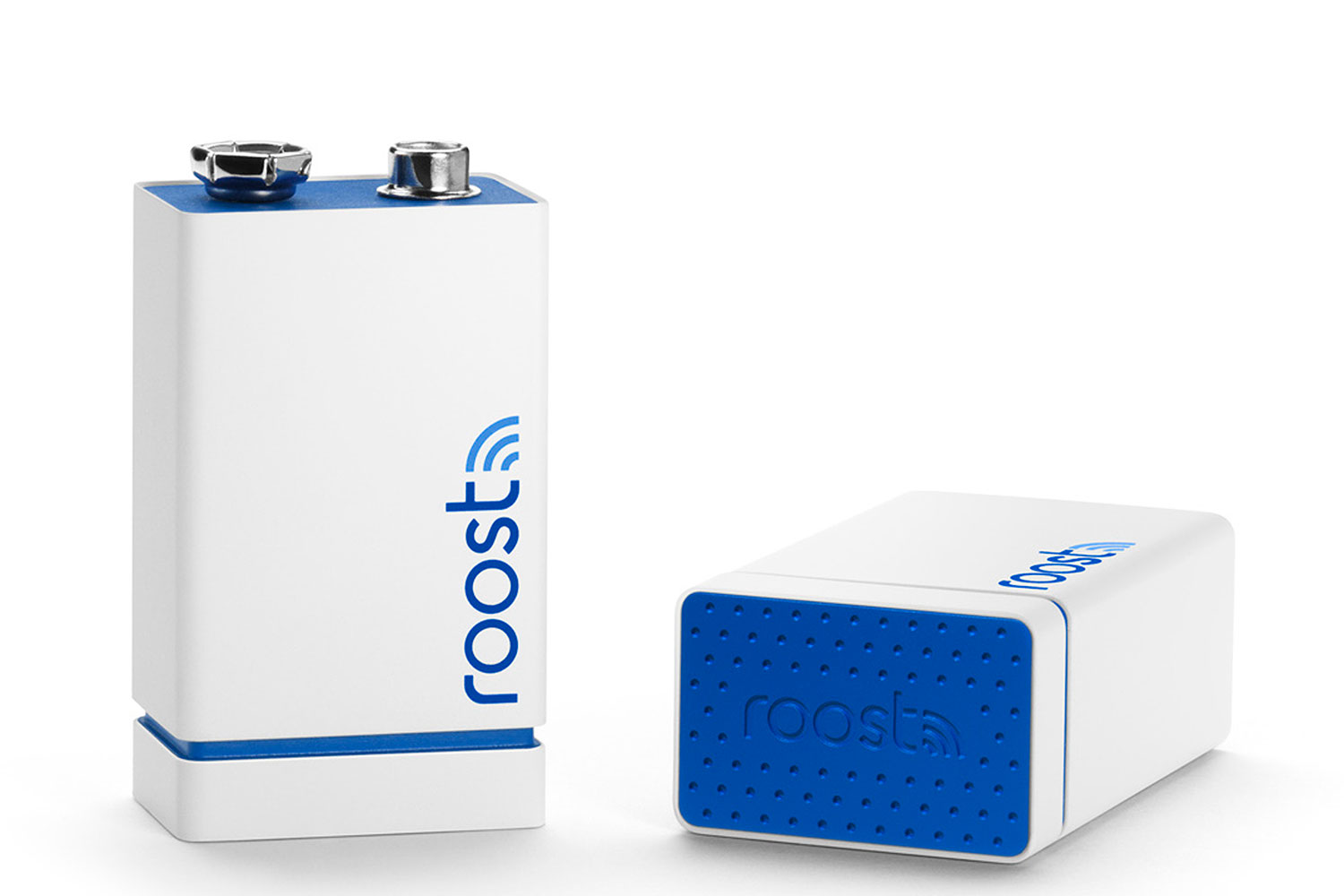
The Roost Smart Battery can be used in any standard battery-powered smoke detector to alert you when the alarm is activated.
Courtesy Roost
July 26, 2017 | Miles Durie
Safe and sound
 Smart alarms provide connectivity and peace of mind
Smart alarms provide connectivity and peace of mind A smart home needs to be a connected home, but the fact that a home is connected doesn't necessarily make it smart. When it comes to safety, though, there really is a new level of intelligent connectedness available in today's generation of smart smoke alarms.
At their most basic, and cheapest, they can alert you remotely via a mobile app when an alarm is activated. In fact, a device like the Roost Smart Battery can smarten up any standard, functioning smoke detector – as long as it's battery-powered or has a battery backup – for about $60. This deceptively simple device is a lithium nine-volt battery with a Wi-Fi chip and a microphone that "hears" your alarm.
Not only will you get an alert when the alarm is activated, you'll also get one when the battery needs replacing. No more annoying low-battery chirps, and yes, you can just swap in any standard 9-volt cell when it's time.
If you already have a full complement of fully functional conventional smoke and/or carbon monoxide alarms, consider a smart alerter. The Leeo Smart Alert, for example, costs about $100. All you do is plug it in and connect it to your home Wi-Fi, and it goes to work listening for alarms and keeping tabs on temperature.
If the Leeo alerts you via its app and you don't respond within a specific time frame, it will then reach out to the backup contacts you've set up. It also functions as a smart night-light that can be activated by ambient light conditions, using a timer, or remotely in real time.
A smart home needs to be a connected home, but the fact that a home is connected doesn't necessarily make it smart.
If your existing alarms are interconnected, you only need one alerter – if not, you'll want one per floor. But if your setup is really basic, you might want to consider a major upgrade to something like the highly rated Nest Protect. Available in battery-powered and hardwired versions, this is probably the ultimate in intelligent alarm systems on the market today.
At around $150 per unit, the costs of outfitting a large home with Nest Protect alarms can add up quickly. But for the price, you'll have carbon monoxide and smoke detection, as well as a range of different alerts that give you all the information you could want, such as what's been detected and where.
Its split-spectrum sensors pick up on both fast-burning and slow-smoldering fires –the latter being the most common type of house fire. You can silence false alarms (burnt toast, anyone?) and check parameters, such as the status of the six lithium AA cells in the battery-powered version, from your mobile device.
Nest Protect units interconnect, so you'll know about an alarm that's been activated even two floors away. They also sense temperature, humidity, occupancy and ambient light, and are equipped with LED lighting.
After some issues with the first-generation version that went on the market in 2013 – false alarms and battery life were reportedly problematic – Nest Labs released a new version a couple of years ago that seems to have addressed the flaws. Combine that with its highly sophisticated level of smoke detection, and it's hard to argue against this product, or one like it, for any reason other than price.
Tagged: Guest Column | high-tech homes | home technology | House & Home | Miles Durrie | Nest | tech




